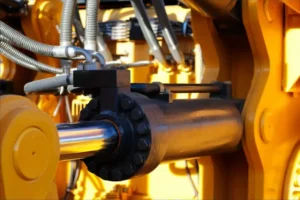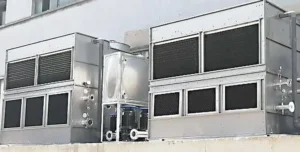Mga ingots ng tanso, bilang isang mahalagang materyal na metal, maglaro ng mahalagang papel sa industriya ng kuryente, construction engineering, automobile manufacturing, machinery manufacturing, chemical industry and other fields. How to make copper ingots mainly includes copper smelting, copper refining and copper casting.

1. Copper smelting
Ore selection and preparation
- Copper-containing ore is mined from the mine and processed to extract ore with higher copper content.
- The ore is crushed into smaller particles for subsequent flotation and smelting.
Flotation and smelting
- The crushed ore is fully tumbled in the flotation tank together with the bubble agent, and the useful minerals (mainly copper minerals) are separated from the gangue minerals (such as quartz, silicate, atbp.) by the buoyancy of the bubbles.
- The copper-containing concentrate obtained by flotation is sent to the smelting furnace for high-temperature smelting. During the smelting process, the copper minerals are reduced to copper metal and separated from other impurity metals and gangue minerals.
2. Copper refining
Impurity removal and purification
- The crude copper obtained by smelting contains a high impurity content and needs to be refined. The refining process usually includes two methods: electrolytic refining and fire refining.
- Electrolytic refining is to reduce the copper ions in the crude copper to copper metal on the cathode by passing electricity in the electrolytic cell, while the impurities remain in the anode mud or electrolyte.
- Fire refining is to oxidize the impurities by adding oxidants (such as oxygen, hangin, atbp.), and separate the impurities from the copper liquid through steps such as blowing and refining.
Composition adjustment
- According to needs, appropriate amounts of alloy elements or other doping metals can be added during the refining process to adjust the composition and properties of the copper ingot.
3. Copper casting
Casting preparation
- The refined copper liquid needs to be cooled to an appropriate temperature for casting.
- Prepare the casting mold, the shape and size of the mold should be determined according to the specification requirements of the copper ingot.
Casting and cooling
- Pour the refined copper liquid into the casting mold and wait for the copper liquid to cool and solidify.
- Sa panahon ng proseso ng paglamig, the cooling rate and temperature gradient need to be controlled to avoid cracks or uneven structure inside the copper ingot.
Demolding and subsequent processing
- After the copper ingot is completely cooled, it is taken out of the mold.
- Surface treatment and cleaning of the copper ingot are carried out to remove impurities such as oxides and oil stains on the surface.
- Cutting, grinding and other subsequent processing are carried out as needed.
4. Precautions
- During the entire production process, parameters such as smelting temperature, atmosphere and additive ratio need to be strictly controlled to ensure that the composition and quality of the copper ingot meet the requirements.
- Sa modernong produksyong industriyal, automated smelting equipment and advanced control technology are usually used to improve production efficiency and product quality.
5. Application fields
- Electrical industry
Copper ingots have good electrical conductivity, making them the preferred material in the manufacture of electrical equipment and electronic products. It is widely used in the manufacture of electrical equipment such as wires, cables, motors, transformers, generators, atbp., and can effectively transmit current to ensure the normal operation of the equipment. - Construction Engineering
In the construction industry, copper ingots are used to manufacture pipes, roofs, columns and other components. The corrosion resistance of copper enables it to effectively resist oxidation and corrosion, so it has a long service life in outdoor environments. Bukod pa rito, copper ingots can also be used to make copper decorative materials, such as copper plates and strips, for architectural decoration, plaques, atbp., to add beauty and durability to buildings. - Automobile Manufacturing
In the field of automobile manufacturing, copper ingots are used in the manufacture of components such as engines, transmission systems, and brake systems. The wear resistance and thermal conductivity of copper help improve the performance and safety of components and ensure the normal operation of the car. - Machinery Manufacturing
In the field of machinery manufacturing, copper ingots are used to manufacture mechanical parts such as bearings, gears, and connectors. Copper has high hardness and strength, which can meet the material performance requirements of mechanical equipment and ensure the normal operation of mechanical equipment. - Chemical Industry
Copper ingots are also used to manufacture chemical equipment and containers, such as reactors, heat exchangers, and pipelines. The corrosion resistance and thermal conductivity of copper make it an ideal material for chemical equipment used in acidic and alkaline environments.
Making copper ingots is a complex and delicate process that requires strict control of parameters and conditions at each link to ensure the quality and performance of the final product.







